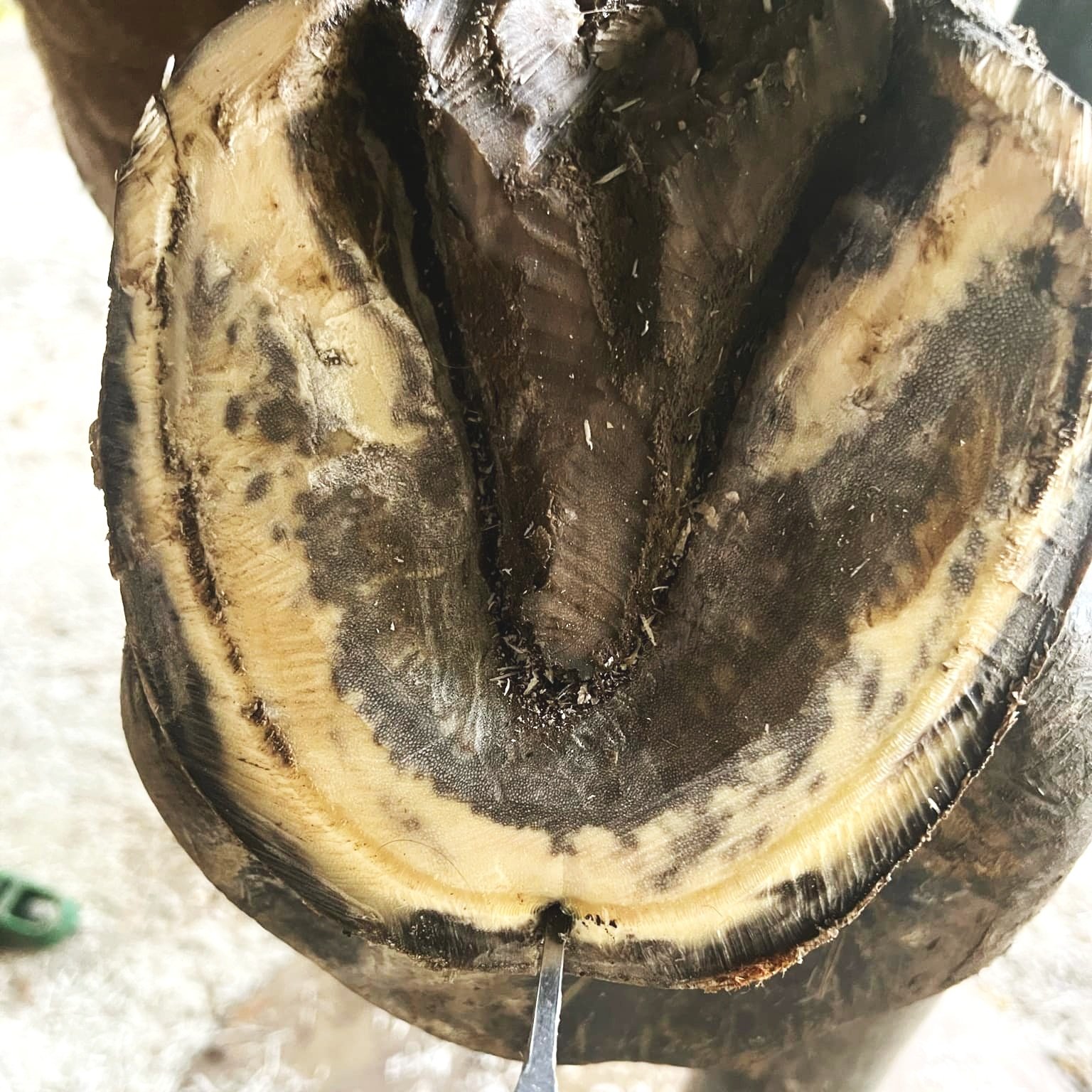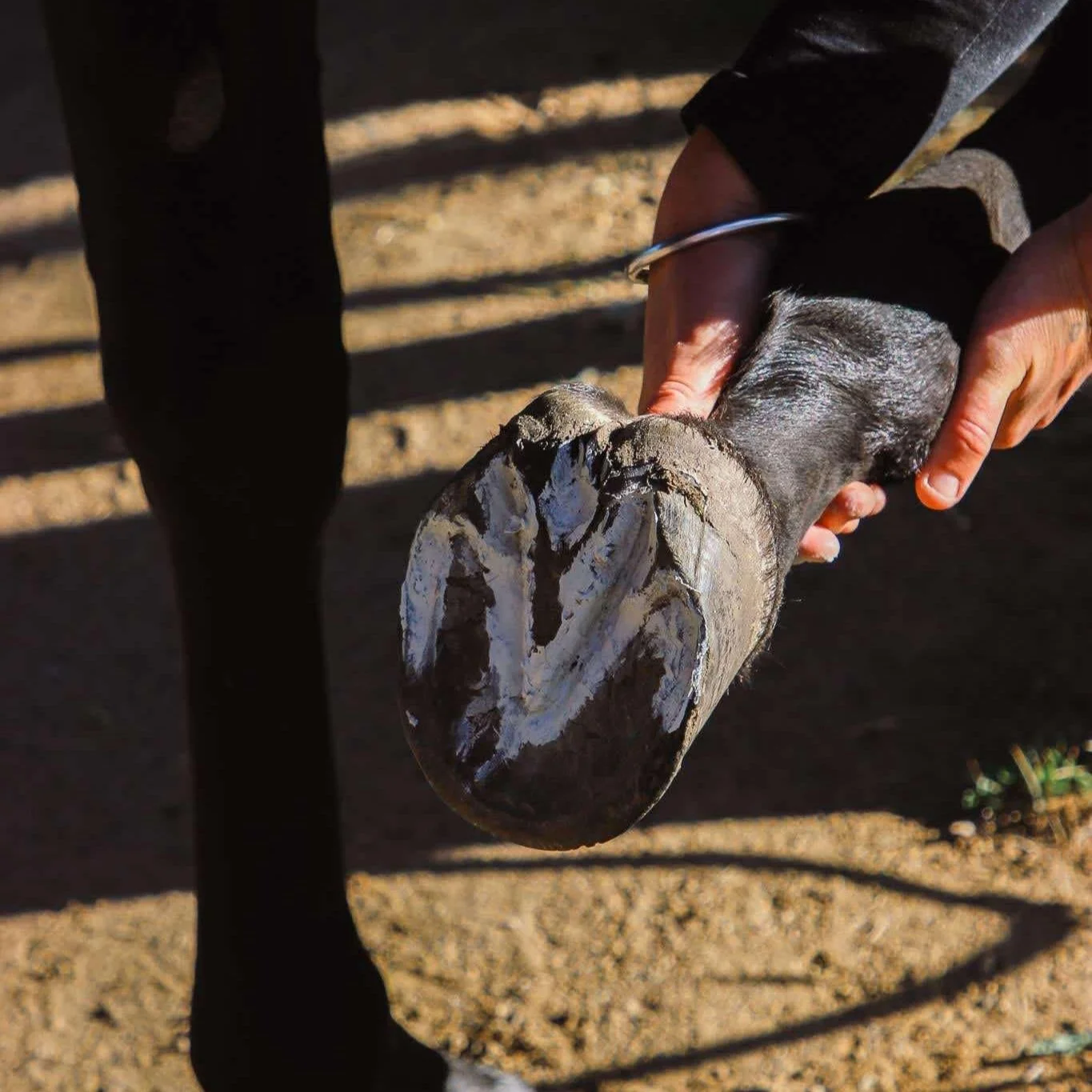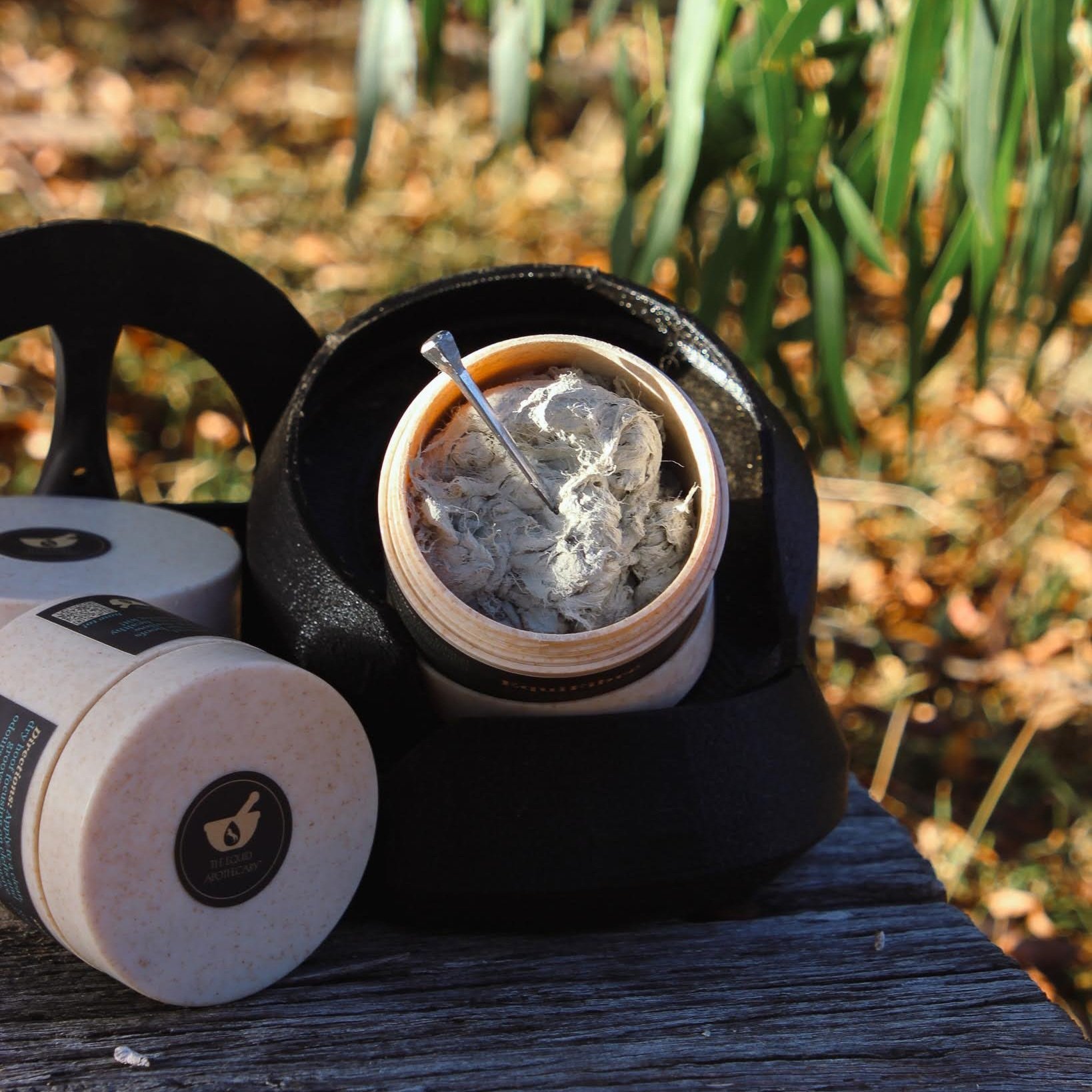Hoof Thrush 101: The Who, What, Where, When and Why
Thrush is a common and persistent issue in the equine world. Early detection and treatment lead to fast results. However, for many of us, it’s not always easy to recognise. Do you know what you’re looking for?
Let’s walk through the causes, symptoms, risks, and treatments.
Causes
Thrush in horses refers to a fungal or bacterial overload in the hoof. While it can be caused by various bacterial strains, the most common culprit is Fusobacterium necrophorum. For this nasty bacteria to thrive, it needs the right conditions. It especially loves:
Constant dampness
Low oxygen environments
Degraded, moist, crumbly hoof tissue to feed on (yum!)
This is why thrush is more common in wet conditions — it has everything it needs to flourish. Its favourite hiding spots are dark, tight areas like the collateral grooves and the central sulcus of the hoof.
Symptoms
Regularly cleaning and inspecting your horse’s hooves is a great habit. That way, if something changes, you’ll notice it early.
The first giveaway is usually the smell — it can be strong and unpleasant. Our noses have evolved to detest the scent of harmful bacteria, so trust your senses!
Hooves affected by thrush may have a black, tar-like substance in the crevices around or on the frog. The frog may be soft or tender when pressed. Ideally, the central sulcus should be open and visible. If it resembles a “plumber’s crack,” there’s a good chance thrush is lurking within.
Rule of thumb: If fresh air can’t circulate in the area, thrush-causing bacteria will love it. Oxygen and sunlight are their enemies.
Risks
Most cases of thrush are mild, easily detected, and treated. In early stages, thrush rarely causes lameness. But if it’s left to spread unchecked, it can affect the sensitive internal tissues of the hoof — and that’s when things get serious. Severe infections may require veterinary intervention.
Treatment
Most cases respond well to management changes and a good topical product. A multi-pronged approach works best.
Here’s your Thrush Treatment Checklist:
Practice good hoof hygiene: regular picking and clean living conditions
Maintain a consistent hoof care schedule with a trusted professional
Feed a well-balanced diet (poor nutrition = poor hoof quality = higher infection risk)
Use an effective topical treatment (we recommend EquiMud)
Avoid harsh products that damage healthy hoof tissue — they make reinfection more likely
For central sulcus thrush, consider using a packing product (such as EquiFibre)
For thrush lurking deep in the collateral grooves, flushing may be best (try FootSure)
Bonus Tip!
If you ride in a sand arena, pick out your horse’s hooves before riding. The sand acts as a gentle exfoliant for the sole, helping remove degraded or flaky tissue.
Want to try a product to help keep hoof microbes at bay? Check out EquiMud
Got questions? Leave a comment or DM us on Instagram
Found this helpful? Share it with a fellow horse owner!











Hoof Dust combines natures antibacterials for a powerful drying and purifying hoof care powder. Just dust it onto the sole, concentrating on grooves and crevices. Ideal for use under hoof boots.
*Please note this is currently a plain label version (as pictured)